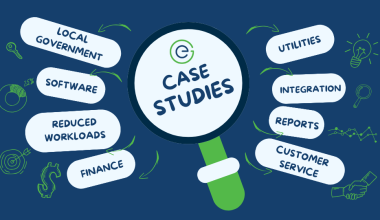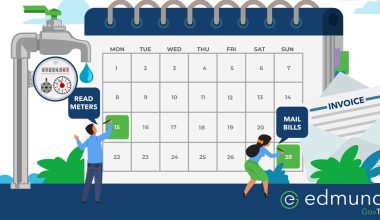Is your utility considering a move to automated meter reading (AMR) or advanced meter infrastructure (AMI)?
Are you considering upgrading from an AMR system to an AMI system?
Are you uncertain what the differences are? Continue reading to learn more…
Reduced meter reading costs
The primary reason most utilities implement either form of automated meter reading system is to reduce meter reading costs. No matter if they use radio read handhelds, a drive-by system or a fixed base meter reading system, utilities can read meters faster and more accurately than with traditional handhelds or manual meter reading.
Cost savings are achieved by reducing the time it takes to read meters, from days to hours or weeks to days, depending on the number of meters being read. Additional cost savings are realized in fewer re-reads due to incorrect readings being keyed in a handheld or written in a meter book. For utilities transitioning from manual meter reading, even more savings are gained due to being able to import readings rather than having to enter them.
Improved customer service
Utilities sometimes overlook the customer service aspect of implementing an automated meter reading system when deciding to purchase one. Once an automated reading system is installed, the utility quickly realizes the customer service advantages.
Unlike traditional meter reading where meters are only read once each billing period, both AMR and AMI systems are capable of storing readings for an extended period of time. So when you have a customer complain about a high bill by saying, “I could never have used that much”, you can download the meter reading data for the billing period.
Depending on how the meter is programmed, these historical readings can be captured for any time interval, sometimes as often as 10 times per hour (that’s every six minutes!). Many utilities opt to capture one reading per hour, which is still frequent enough to detect usage patterns. You can then use this data to demonstrate to your unhappy customer that they really did use that much!
Two-way communication
What distinguishes more advanced AMI systems from AMR systems is two-way communication. Often referred to as “smart meters”, AMI meters are capable of transmitting and receiving information rather than only transmitting information as AMR systems do.
Typically, AMR systems are drive-by systems in which meters are read using laptops or handhelds capable of receiving a radio signal. AMI systems, on the other hand, tend to be fixed base systems where meters can be read centrally from the utility office.
Leak detection
AMI systems that transmit readings on a regular interval facilitate detecting water leaks soon after they occur. As soon as a leak starts, the hourly readings will be much higher than normal and will remain high until the leak is stopped. Sudden spikes in usage like this are easily detected and allow you to proactively notify your customer almost as soon as the leak occurs.
Remote disconnect and reconnect
Since AMI systems are capable of receiving information, with the proper meter installed, utilities can transmit a signal to turn off the meter, either for non-payment or when a customer moves out. In the same manner, the reconnect or turn-on can be accomplished remotely, providing faster service to your customer and saving your utility the cost of sending a service technician to the customer’s home.


